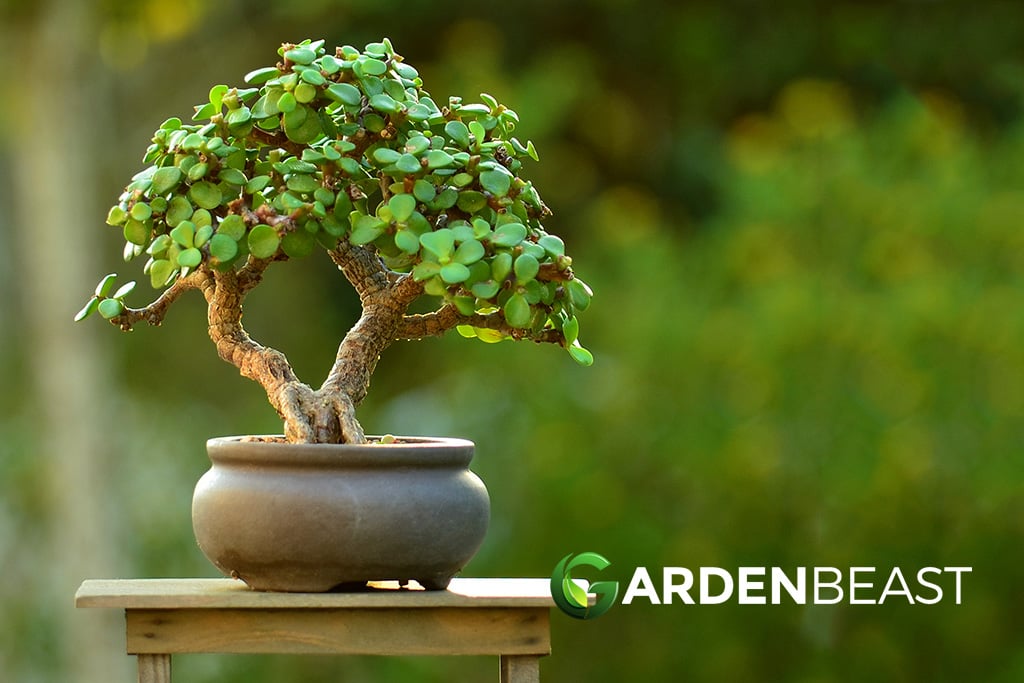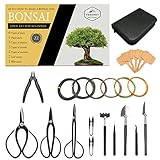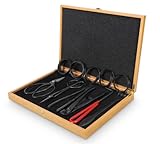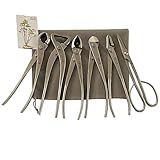The beauty of bonsai trees is undeniable. Despite their small size, these plants look strong and majestic. They can fit into any interior design and they emanate a strong Zen vibe that is bound to relax you instantly. Owning such a plant can bring you a wide range of advantages.
Nonetheless, few people are interested in growing these adorable small trees as many people think that adult plants are expensive and that growing them requires a lot of time and effort. This is true to a certain degree. You can increase your chances of growing a healthy bonsai by opting for a succulent. The chances of killing the succulent are very small and there are simple ways to turn it into a bonsai.
Keep on reading to discover the advantages of these plants as well as some easy tips for growing them.
By the end of this article, growing a succulent bonsai will become the next DIY project that you will enjoy with your whole family.
Advantages of Growing Bonsais
- Beautify your indoor space – Bonsai trees have a whimsical vibe that will beautify any décor. Due to their unique appearance, they will steal the spotlight in any room and they make for a wonderful conversation piece.
- Well-being – While most indoor plants only require to be watered regularly, bonsais need active interaction. with them to shape them according to your plan. Direct interaction with plants is known to lower blood pressure and reduce stress. In the long run, consistent interaction with plants can lead to an improved mood. It also leads to improved focus and productivity.
- Improved air quality – All indoor plants purify the indoor air, some more than others. They also increase indoor humidity. In doing so, they can reduce the occurrence of numerous health problems such as dry skin, sore throat, or coughs.
- Spiritual growth – Bonsais can not only improve your health and your mental state, but they can also improve your spirit. For starters, they teach you to be patient. They are slow growers so they teach you to enjoy the journey and not the destination of this gardening adventure. These tiny trees also teach us self-awareness. When tending to bonsais, we analyze them in detail and we deal with many challenges like stubborn branches or oversize leaves. In the beginning, we meet these challenges with anger and frustration. However, with time we learn that calm and perseverance are far better responses.
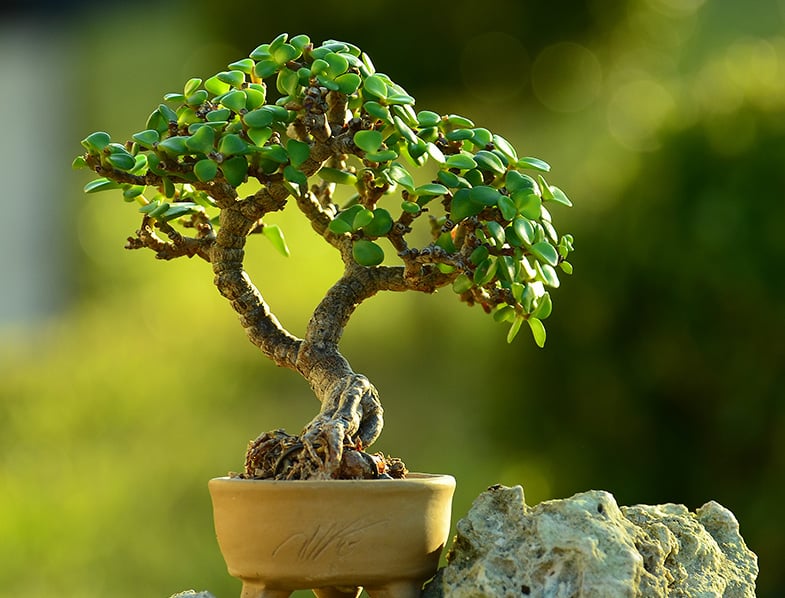
- Improved creativity – Once you master the art of growing a bonsai, you can grow it any way you want. The challenges that you deal with require curiosity and flexibility to find ways to meet your goals.
- Improved nurturing skills – A bonsai tree will teach you that daily nurturing leads to great results. In time, you develop a connection to your tree and you notice that it responds to your energy, just like you respond to its energy. You will tend to it when it looks bad with as much care as you tend to it when it is healthy. If you treat it with kindness, it will reward you by growing according to your desire and improving your well-being in the process.
- Family heirloom potential – Bonsais can live for a very long time, often outliving their owners. They can be passed on to new generations. While their emotional value is what matters for most people, the financial value of these plants also grows with age. They also make for great gifts.
- Increased confidence – A bonsai is a challenging project but the rewards are worth the effort. Once you master the art of growing these plants, you will surely get a boost of confidence for achieving your goal.
- Mastering an art form – Growing a bonsai requires much more than your basic gardening skills. This is an art form that requires both skill and creativity. Techniques such as root and crown pruning, wiring, or using props to model the tree are the foundation of bonsai growing. Ultimately, it is your creative vision that gives uniqueness to such a project.
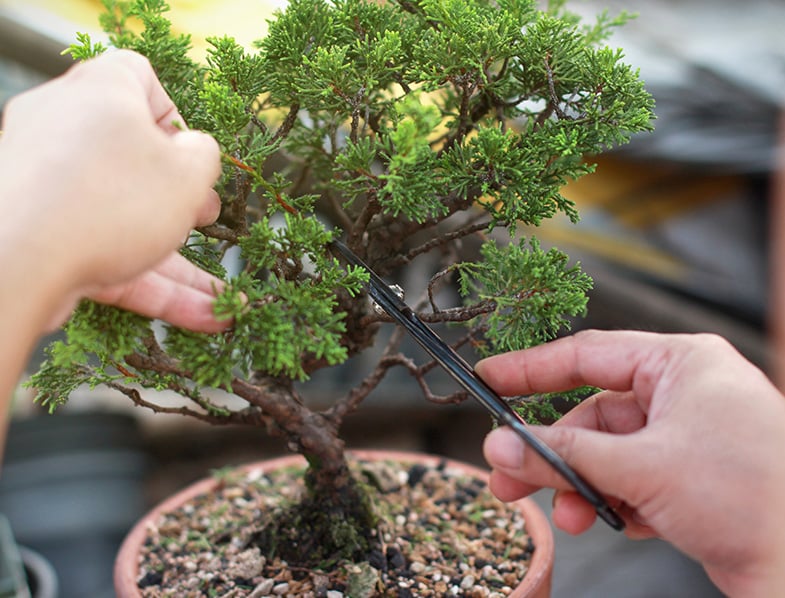
Bonsai History and Interesting Facts
- The history of bonsai trees spawns over 2000 years. Even though bonsai is a Japanese word, this ancient art form originated in China. It is hard to pinpoint the exact moment when this practice appeared, but there is evidence of its history. It is believed that it appeared naturally as a leisure activity. The popularity of this practice is linked to “penjing”, the art of replicating natural sceneries within gardens. According to the Chinese culture, miniature replicas are a way in which one can access the powers of the replicated element.
- The practice of growing miniature trees spread in Japan in the 11th century. It started spreading through religious souvenirs but it quickly turned into a popular activity for the wealthy. Bonsai trees turned into a global phenomenon at the beginning of the twentieth century. The first documented appearance of a Bonsai tree in Europe was in 1909 at a London plant exhibition.
- The mental and emotional benefits of growing Bonsai trees are not assumed. They are scientifically proved by many studies. One South African Ecopsychological study concluded that this activity lowered levels of anxiety and depression. This happens as a result of the respect for nature that this activity dictates.
- The smallest bonsai tree can fit in your hand. The smallest trees are known as shito and they have an average size of 2-4 inches. Due to the very tiny container in which they are grown, they need a lot of care to survive. Nonetheless, under the right conditions, mini bonsai trees can live for 100 years.
- The most expensive bonsai sold for $1.3 million. It was a centuries-old white pine.
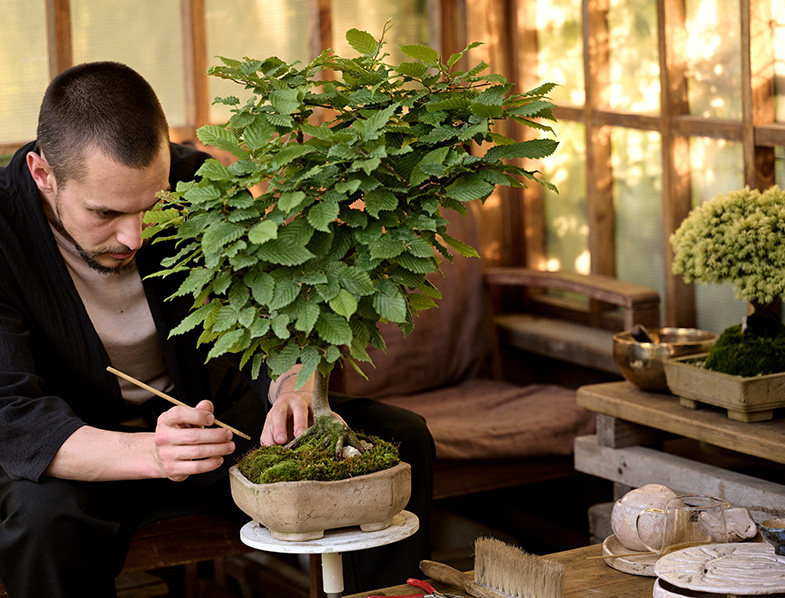
Tips for growing succulents as bonsai trees
There are no special requirements that a plant must meet to be grown as a bonsai. Provided that it is grown in adequate conditions, any plant can be grown as a bonsai. Nonetheless, some plants are more suitable for this task. Such is the case with succulents.
Their firm stems can easily be turned into tiny trunks and their short roots can survive in shallow bonsai containers. Succulents are also easy to grow and they come in a wide range of colours and shapes. If you are almost convinced to try to grow a succulent as a bonsai, the following tips will help you with this challenge.
1. Choose the right succulent
When choosing a succulent plant to grow as a bonsai, there are several factors that you must consider. First of all, make sure to choose a very healthy plant. Check for pests and signs of disease. Check the roots for mould or root rot. In terms of looks, opt for plants that are thicker, both in terms of stem width and foliage.
A thick plant will maintain a tree-like appearance, even when it is trimmed. Last but not least, avoid plants that grow very tall or which have leggy behaviors. These plants can also be grown as bonsais, but you will have to work harder to control their shape. Fast growers are also not recommended because they outgrow their containers very quickly.
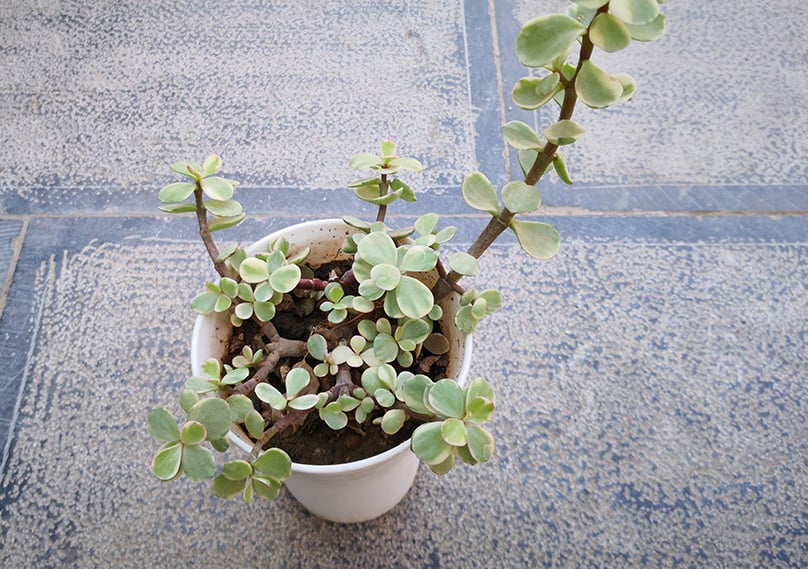
2. Choose an adequate container
When choosing a container for a succulent bonsai, you should look for one that is only a few inches larger than the roots. Succulents have small root systems, so they are unlikely to outgrow such a container soon. You might be tempted to buy a bigger container just to be sure that the plant won’t outgrow it.
This would be a mistake because deeper soil will encourage larger roots. A shallow soil, on the other hand, will contain the growth of the roots, which will also keep the plant small. Make sure to choose a pot with drainage holes. Most bonsai pots have them, but you can also drill them in containers that don’t have them.
3. Choose the right soil
The basic rules of growing a succulent don’t change just because you are growing it in a miniature version. So, you will need basic succulent soil with good drainage. Commercial cactus soil will work just fine if you don’t want the trouble of making your soil mix. If you like making your own mix, use sand, volcanic rocks, pebbles, and pumice to enhance the soil’s draining capacity.
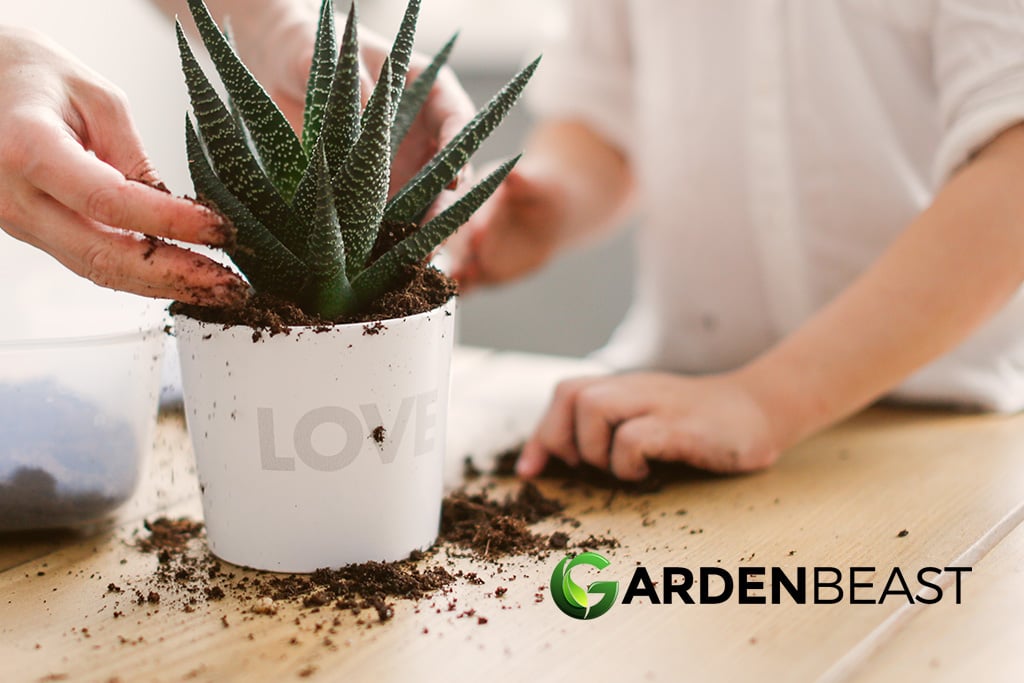
4. Basic care
Succulents thrive on neglect so don’t worry about killing them. Water them only when the soil dries completely and provide them with plenty of sunshine. Indirect bright light is your best bet. Minimum care is a great way to ensure that the plant stays short.
5. Styling
There are several ways in which you can style a bonsai. Trimming and wiring are the main processes, and each one requires you to follow some basic rules. We will explain these processes in detail in the following lines.
6. Trimming
Trimming is the basic skill that you use in the art of growing bonsai trees. It is the easiest way to give your plant a basic tree shape. As a general rule of thumb, trimming should be done before the growing season begins.
You should mainly cut the branches and the leaves that are not growing according to your desired design. However, if unwanted growth appears, you can deal with it on the spot.
What tools do you need?
If the plant is small and tender, basic trimming can be done with your bare fingers. However, for more precision, you will need some tools such as a knife, scissors, and tweezers. The tools should be sterile before using them.
The easiest way to sterilize them is to clean them with rubbing alcohol. This way, you diminish the chances of spreading disease from one plant to another.
- EVERYTHING YOU NEED TO START BONSAI - The bonsai tree kit includes 3 x bonsai scissor, 2 x leaf cutters, 2 x tweezers, 3 x soil shovels/rakes, 6 x bonsai training wires, 1 x wire cutter, 5 x bamboo plant markers. Start your bonsai journey with our bonsai kit.
- DURABLE AND SHARP BONSAI SCISSORS - Made of high carbon steel, we provide 3 premium bonsai scissors with different functions. Cleaned, dried & oiled immediately following each use will make them last for years. Note: The scissors may look a little dirty because they are lightly oiled to prevent rust.
- GREAT STARTER SET FOR THE MONEY - Not to invest in crazy expensive tools for new hobbies. Recommended for an affordable starter kit, and you will get a ton of stuff for a reasonable price.
- LEATHER ORGANIZER BAG - Made of PU leather, the gardening bag is comfortable to the touch. Reasonable and compact layout, easy to carry out, avoid the loss of tools after use.
- NOT ONLY BONSAI - The plant kit helps bonsai trees and all the indoor outdoor small plants. It's perfectly suitable for succulents, cactus, herbs or any houseplants. Everything in a gift box, the tool set is an ideal gift for bonsai beginners and gardening lovers.
- A Complete Set: The Soligt Bonsai Tool Set includes trimming scissor, large butterfly shear, a concave cutter, wire cutter, and five training wire rolls of varying thickness (1.0mm,1.5mm,2.0mm,2.5mm,3.0mm) - all placed inside an exquisite wood storage box - a perfect gift and starter kit for beginner bonsai enthusiasts.
- Function And Fun: Cut the root, remove small and large branches, and trim leaves and stems with the included scissor, shear, and cutter to keep your bonsai tree clean and healthy. Use the root rake and root pick to clean the old soil and grit from the roots while re-potting. Train and shape your bonsai tree with professional aluminum bonsai wires and wire cutter.
- Superior Construction: The scissors and cutters are made of high-quality carbon steel, coated with a smooth finish, and hand-forged for optimum strength - sharp and strong to ensure a precise cut while durable and sturdy to last for years.
- Comfortable To Use: The ergonomically designed handle and smooth surface make these bonsai tools easy to hold and use for the best form and function. The wooden carrying box is designed to keep all the tools organized and in one place for easy portability and storage.
- Wide Application: This Bonsai Tool Set is not just for live bosail plants, can also be used to maintain any indoor or outdoor plants or trees, regardless of type or size.
- Product inclusion :Knob Cutter,Trunk Splitter,Concave Cutter,Wire Cutter,Jin Pliers and Bonsai Scissors
- Material: Stainless Steel
- Size: 210mm
Last update on 2024-10-15 / Affiliate links / Images from Amazon Product Advertising API
Bonsai Trimming Techniques
- Basic techniques – Do the main trimming before the start of their growing season. You can do basic trimming from time to time to deal with unwanted growths. Some plants may need to be trimmed once or twice a week to control the density of the leaves.
Make sure to pinch all leaf buds that grow on the lower side of the trunk. To encourage clusters of leaves, pinch the tip of leggy branches. Use a pair of long tweezers to pinch or remove dead plant bits within the tree crown. - Pruning branches – A pair of bonsai pruners is essential for any bonsai artist. If you can’t invest in such a tool at the moment, you can use a pair of sharp, pointed scissors. When pruning branches, you must envision your ideal tree shape. However, this is not something that you can achieve in a single pruning session.
Prune unwieldy branches, but wait for new growth to aid you in building the desired shape. Make sure to cut the branches as close as possible to the main branch, so that the plant can grow a smooth callus. Not only are stubs and cut-outs inesthetic, but they are also a breeding ground for infections. On the same note, avoid using a wound sealant because it can trap pathogens underneath it.
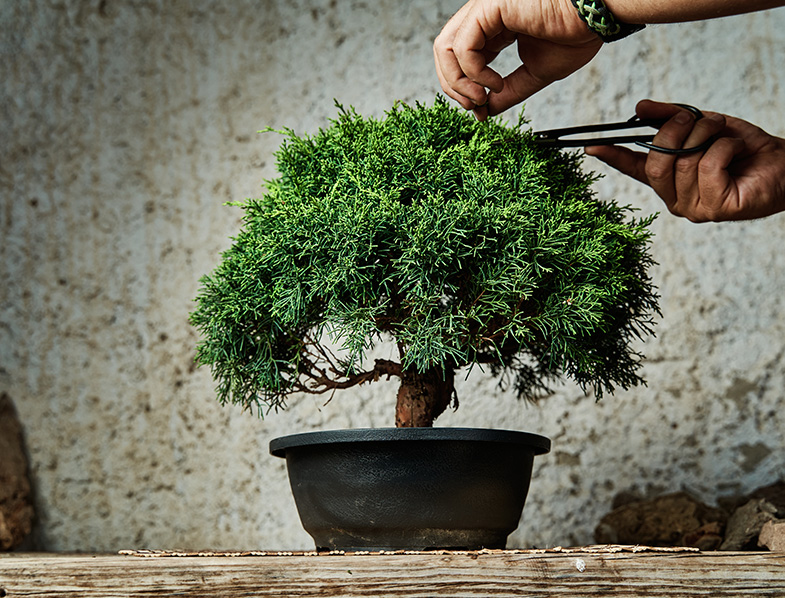
7. Wiring
Trimming can eliminate unwanted growth and encourage new growth in certain areas. However, you can also style existing branches to grow in your desired shapes. Wiring consists in wrapping wire around certain branches to bend them according to your desire.
For succulents, you can use annealed copper wire. Aluminium wire also works and it is sometimes easier to work with. Succulents can be wired at any time of the year. Nonetheless, it is best to avoid the growing season. This is the time when branches thicken quickly, so you can scar them if you don’t check on the wires regularly.
As a beginner use wires with an average width of 1-4 mm. The wire’s width should be a third of the branch’s width. When wiring thick branches cover them first with raffia soaked in water. This will protect the branches from potential damage during the wiring process. Wrap the wire around the branches at a 45 degrees angle to allow the branches to grow thicker.
There are a few basic wiring techniques that you should know.
- Double wiring – This technique can be used on neighbouring brands with a similar width. Start by wiring the trunk and then the lowest branch. Wire it completely from where it attaches to the tree until its tip and then move to the other branch. Wire the branch from below if you want to bend it downwards. Similarly, wire from above if you want to bend it upwards.
- Single-wiring – Cut enough wire to wrap the trunk twice and wrap the desired branch from base to tip. Avoid crossing wires as much as possible.
- Guy-wiring – This technique works like an anchor to bend branches downward. You wrap some rubber on the branch and then hook the wire around it and attach the other tip of the wire to something sturdy at the base of the bonsai tree. You can use a sturdy root or even the plant’s pot.
Avoid watering the plant before wiring it. When the plant’s cells are hydrated they make the stems more rigid, so they are less flexible to bend. When the plant is wired completely, bend it according to your desire. Avoid repeated bendings.
Hold the outside of the branch and bend it from the inside to avoid splits. After bending it, care for the plant as you normally would. Make sure to monitor the plant’s growth and remove the wires before they cause scars on the branches. Succulents are very responsive to bending and can maintain their new shapes in less than a month.
Basic Bonsai Styles
If you think of bonsai growing as an art, you should not constrict your visions by traditional growing styles. However, following traditions is a great way to master new skills. Moreover, traditional growing styles add value to a bonsai plant, if you plan on growing for profit.
There are over a hundred styles in the Japanese Bonsai culture, but 5 main styles are considered staples. As a beginner, it is essential to master at least these 5 styles.
1. Formal upright
Also known as Chokkan, this is the basic style that you start with as a beginner. The formal upright style mimics a tree that grows in natural conditions. A bonsai grown in this style should have a vertical trunk with the crown located above the centre of the trunk.
The thickness of the foliage should taper towards the apex. This means that the upper branches must be shorter than the lower ones. The best plants to grow in this shape are junipers, spruces, and pines, but you can also do it with succulents. Jade plants look particularly well in this style. To flatter such a bonsai shape, use an oval or a rectangular container.
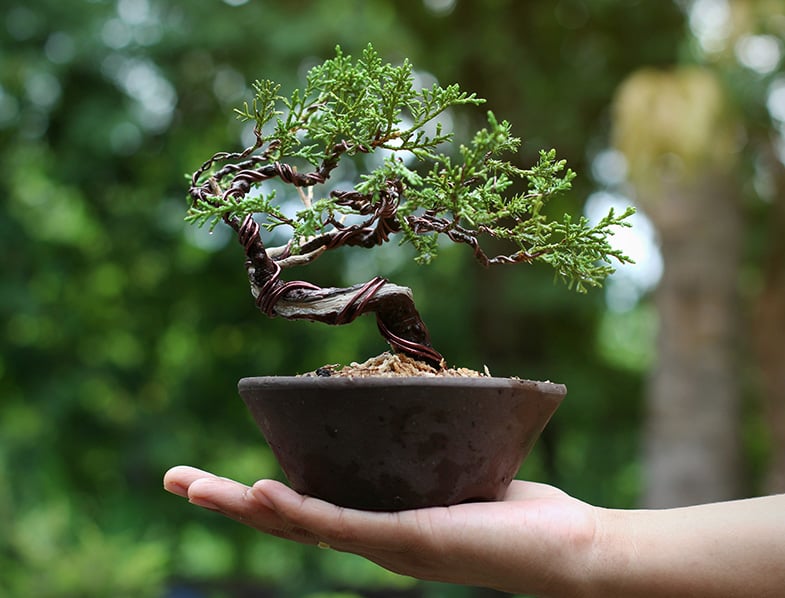
2. Informal upright
Also known as Moyogi, this style is less strict than the formal upright. It is also reminiscent of a tree that grows in natural conditions, but one that has suffered from the elements. The trunk can be twisted, the branches can sag or change directions. In nature, this happens when the tree needs to find shelter from the wind or to bathe in sunlight.
To create this style, you can use a plant that already shows signs of stress. You can create trunk movement using wiring techniques. The beauty of this style is that mistakes can be incorporated into the design and make the overall result look more natural.
3. Slanting
Also known as Shakan, this style evokes a tree that has been tilted to the side. In nature, this often happens if the tree is trying to reach for sunlight or if it has been pushed by wind or water. To balance the tilted trunk, the tree must develop a strong root system, usually larger on the opposite side.
The roots will create the balance effect naturally as you gradually bend the trunk. The beauty of this technique is that you get to observe this process. To achieve a natural design, observe trees that naturally grow like this and try to replicate their designs.
4. Cascade
Also known as Kengai, this style evokes trees that grow on the side of a mountain. In this style, the tips of the plant’s crown will extend outside and under the base of its container. This style can be challenging for a beginner. Basically, you have to go against the plant’s natural tendency to grow upwards.
Guy-wiring is the best technique for achieving such a result but it also needs to be combined with regular wiring. For this style to shine, display the bonsai on a stand and allow the trunkline to cascade as low as possible.
5. Semi-cascade
Also known as Han-Kengai, this style also depicts a tree that grows on the side of a cliff. However, its trunk is only slightly bent to a side and it doesn’t hang under the base of the pot.
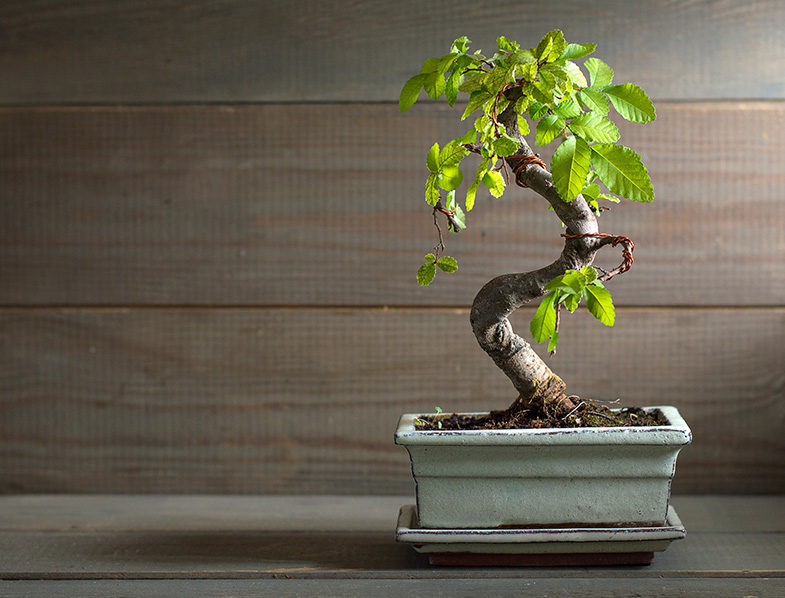
In Conclusion
As you can see, once you learn a little bit about the art of growing bonsais, it no longer looks so complex and overwhelming. As we already mentioned, almost any plant can be grown as a bonsai, and certainly any succulent. However, some plants are easier to work with and are therefore more suitable for beginners. We recommend starting with one of the following plants:
- Portulacaria Afra (Elephant’s Food)
- Crassula sarcocaulis (Bonsai Crassula)
- Crassula ovata ‘Gollum (Gollum Jade)
- Crassula tetragona (Miniature Pine Crassula)
- Adenium Obesum (Desert Rose)
- Euphorbia Milii (Crown of Thorns)
- Crested succulents (monstrose succulents)
No matter what plant you choose, keep in mind that it will require more care and interaction than a normal plant. You must enjoy caring for it, without being too focused on the final design because it can take a very long time to get there. Reap the benefits of this wonderful activity and watch your life improve as you gain new skills.
It might start as a recreative activity, but it will be something that you will take great pride in sooner than you think. Aside from the trimming and bending, bonsai succulents don’t have special requirements. They are just as hardy and low maintenance as the regular size succulents. That’s the best part of choosing succulents for your first bonsais. The chances of killing them are practically nonexistent.
Are you growing succulents as bonsais? Let us know in the comment section!
